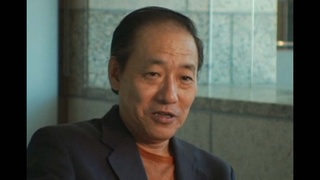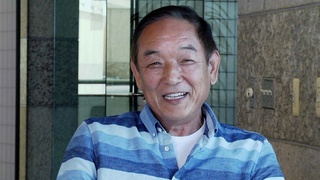Interviews
Coming to America
Always, I wanted to get out that small city, small town. Then my neighbor, right next door almost—one block—is a movie theatre. John Wayne and all those—pow, pow, pow—tough American cowboys. Without understanding English too much, but I enjoy story. Always the bad guy die [in the] end. Very simple story. So I thought all United States was a big country. So I wanted to come to [the] United States, too.
I*: Why San Francisco?
This is another story. Okay? My wife, I met my wife in Tokyo when I was [in] college doing the martial art. She is an American-born Japanese—third generation. She was going to Waseda University, International Department. Then, her major was photography. So accidentally, our practice was high interest. So she took my picture. We get to know each other. Then I wanted, I told her I wanted to come to the United States [for] a long time or, you know, Brazil. I couldn’t go because I have no farming experience. So her father died, but older brother become sponsor to get my visa. So I came to—not to San Francisco—Watsonville and strawberry pick, strawberry grove, with a Mexicano.
* "I" indicates an interviewer (Art Hansen).
Date: January 27, 2005
Location: California, US
Interviewer: Art Hansen, Sojin Kim
Contributed by: Watase Media Arts Center, Japanese American National Museum.
Explore More Videos

On returning to post-war Peru (Japanese)
(b. 1948) Executive Director of Amano Museum





Facing discrimination in America (Japanese)
(b. 1936) Shin-issei welding business owner



My daughter couldn’t fit in Japan, so I decided to go back to America (Japanese)
(b. 1936) Shin-issei welding business owner

Tough life at boarding house (Japanese)
Shin Issei – owner of izakaya (Japanese-style tavern) and kappo (small Japanese diner) restaurant, Honda-Ya



General reasons why people left Japan for Peru
Okinawan American whose parents are from Peru.

Her mother came to the U.S. with a group of picture brides
(b. 1923) Japanese American poet, activist

Her father bought her mother American clothes after she arrived from Japan
(b. 1923) Japanese American poet, activist
